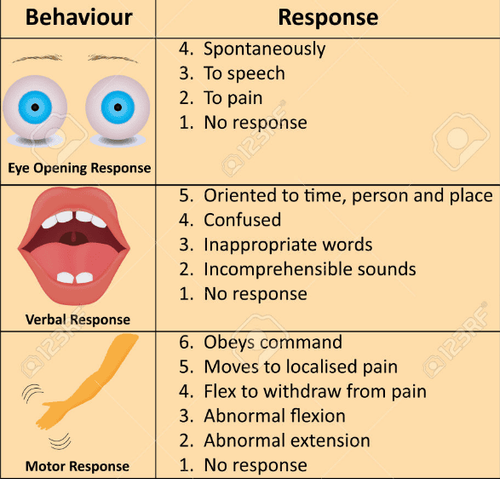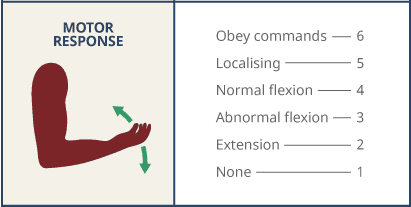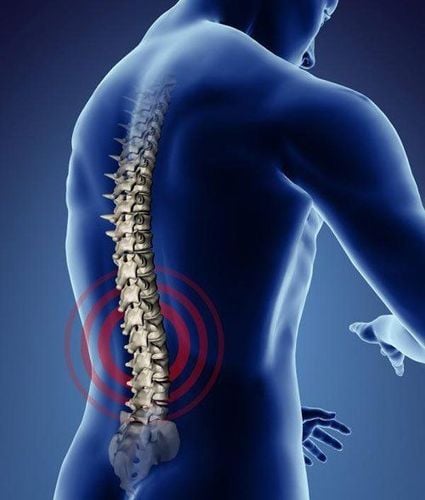This is an automatically translated article.
The article was professionally consulted with Master - Doctor Huynh An Thien - Department of Medical Examination and Internal Medicine, Vinmec Da Nang International General Hospital.The Glasgow Scale is a tool to assess the consciousness of patients after acute brain injury. Later, the scale was also used for trauma patients or general disturbances of consciousness. The Glasgow Scale is one of the basic patient approaches that all healthcare professionals should master.
1. What is the Glasgow Scale?
The Glasgow Coma Scale was described in 1974 by Graham Teasdale and Bryan Jennett. It is a tool to help assess coma and impaired consciousness based on factual evidence. In other words, the Glasgow scale is a measure of the level of consciousness of patients with acute brain injury due to injury.Over time, the Glasgow scale has increasingly proven its role and has become a reliable, objective scale for recording initial and subsequent levels of consciousness in a person after trauma brain, from first responders at the site of trauma such as a car accident or sports injury, to neurologists or in intensive care units. Together with the imaging evidence of traumatic brain injury , this scale is quite simple but still correlates well with severe brain injuries.
Accordingly, for patients requiring a Glasgow scale assessment, this should be done first in the field, at the time of admission, and then every four hours unless otherwise indicated. These are very important clinical signs, which serve as the basis for determining the improvement or worsening of the patient's consciousness.

2. What is the content of the Glasgow scale?
The Glasgow Coma Scale analyzes a patient's consciousness according to three different criteria, including visual, verbal, and motor responses. The maximum score for each criterion in the scale is different but the maximum possible total score is 15 and the lowest possible score is 3.Trắc nghiệm: Bài kiểm tra chỉ số trí tuệ cảm xúc (EQ) của bạn
Chỉ số trí tuệ cảm xúc Emotional Quotient (EQ) là một chỉ số dùng để nói lên trí tưởng tượng, đánh giá và cảm xúc của một con người. Hãy làm bài trắc nghiệm sau để biết chỉ số EQ của bạn là bao nhiêu?
Nguồn tham khảo: webmd.com
2.1 Eye response
Opens eyes spontaneously (+4) Opens eyes on call (+3) Opens eyes on painful stimuli (+2) Doesn't open eyes (+1)2.2 Verbal response
Good orientation, providing correct name, location and date and time (+5) Confusion, disorientation, but coherent communication (+4) Speaks simple words that are easy to understand (+3) Speaks nonsense (+2) Silence (+1)2.3 Responding with movement
Execution of command (+6) Correct response to painful stimulus (+5) Incorrect response to painful stimulus (+4) Rigid flexion (+3) Stiff extensor (+2) Unresponsive ( +1)
3. Significance of the Glasgow scale in coma
Each brain injury has different characteristics, in terms of the patient's location, injury mechanism or extent of damage. However, in general, the significance of the Glasgow scale in coma helps to classify the degree of brain injury, the lower the score, the more severe the prognosis:Severity: The Glasgow scale score is from 3 to 8 Moderate : The score of the Glasgow scale is from 9 to 12 Mild: The score of the Glasgow scale is from 13 to 15 Accordingly, in addition to the usual indications of intubation, proactive respiratory control, the scale Glasgow of 8 or less is also a factor promoting early intervention to preserve the patient's life.
At the same time, the significance of the Glasgow scale score in coma is also reflected in the score progression over time. The faster the score declines, the worse the prognosis in a short time.

4. How to use the Glasgow scale?
The reliable assessment of the Glasgow Coma Scale is pivotal in patient follow-up and care. Along with the research evidence on the role of the Glasgow scale in practice, there are many different approaches to evaluating this scale. However, the basic components of the scale appear to be invariant over time. Therefore, one of the goals when using the Glasgow scale is to have a standardized approach to assessment and to increase consistency in its use.How to use the Glasgow scale includes the following components:
4.1 Responding visually and verbally
This is the basic way the patient communicates with the outside environment. Steps in visual and verbal response assessment have remained constant on the Glasgow scale since birth.Eye opening response to force is the most accurate reflection of the ability to respond to external stimuli in comatose patients.
In which, the way of assessing the verbal response will be more confusing. Patients who can answer with inappropriate words but still understand the meaning are still rated higher than the sounds that cannot be understood.
4.2 Responding with locomotion
The composition of the advocacy response criteria initially consisted of five components and was changed in 1976 by incorporating a sixth step. This component helps to distinguish between normal flexion and extension and an abnormal or pathological pattern.Previous observational studies have shown that there is a relatively large difference in the ability to assess the behavioral response criteria between experienced healthcare workers and less experienced staff. Therefore, it is very necessary to train, test and self-test in the Glasgow scale assessments to achieve consistency and high reliability.

5. Limitations of the Glasgow Scale
Although it has long been a relatively accurate coma rating scale, the Glasgow scale still has some limitations, affecting the consistency and reliability of this Glasgow scale as follows:Age language or cultural differences Hearing loss or hearing impairment Pre-existing intellectual or neurological damage Psychological disorders Weakness Spinal trauma Interventional intubation or tracheostomy Swelling sedatives, alcohol In addition, there are other factors such as the education level or experience of the medical staff that can change the results of the patient's perception of the Glasgow scale.
In summary, the Glasgow score can help identify changes in consciousness in patients with traumatic brain injury. This is a tool that requires medical staff to clearly understand its purpose and implementation. In which, identifying the right patients to be evaluated will be the first step in using the scale correctly.
In April & May 2021, when there is a need for examination and treatment of Traumatic Brain Injury at Vinmec Phu Quoc International Hospital, customers will enjoy double incentives:
- Free specialist examination and Received the Rehabilitation Package
- Reduce 50% of the cost for customers with a prescription for post-examination treatment. The program is limited to the corresponding technique of each hospital and to customers who perform this treatment technique for the first time at Vinmec.
Please dial HOTLINE for more information or register for an appointment HERE. Download MyVinmec app to make appointments faster and to manage your bookings easily.














